
Nicole Maestas
Research Associate
Harvard University
Contact
Address
Grants
- NB19-28 Disability Insurance and Treatment for Pain
- NB19-29 Geographic Variation in SSDI Receipt: The Role of Claimants’ Representatives, Part II
- Project 2 (2017-2024) - Opioid Treatment for Pain: Causes and Consequences
- Post-Doctoral Fellowship Program on the Economics of an Aging Workforce, 2018-2021
- Improving Decision-making by Older Adults in the Medicare Part D Program
- NB19-24: Causes and Consequences of Geographic Variation in Healthcare Spending for Individuals with Disabilities
- NB20-12: Exploration of an Alternative Disclosure Approach for SSA Statistics
- NB20-15: Improving Healthcare Outcomes for SSI Beneficiaries
- Post-Doctoral Fellowship Program and Small Grants Research Program on the Economics of an Aging Workforce, 2020-2024
- NB21-13: The Effect of Health Insurance Affordability on the Employment of People with Disabilities
- NB21-07: Understanding Variation in Occupational Requirements
- NB21-12: Measuring Geographic Variation in Utilization of Long-term Services and Supports Among SSI Recipients
- NB21-08: Applying Aspects of Disability Determination Methods from the Netherlands in the U.S.
- NB21-21: RDRC Medicaid Data Initiative: Understanding Racial Disparities among SSI Recipients
- NB23-01: Expanding Research Capacity at Historically Black Colleges and Universities
Loding Complete
Explore Research
New This Week
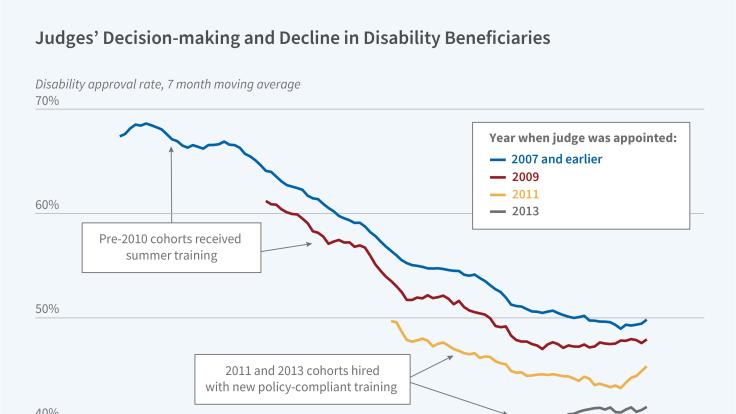
December 31, 2024 - Article
After a long period of growth in the number of disability insurance beneficiaries in the US, in the early 2010s, the total number of disability insurance recipients began to contract, and the labor force participation rate of people with disabilities began to grow. In Social Security Disability...
Many social programs involve some level of local autonomy, with local governments making some program design decisions within a set of national guidelines, and with financing being shared between local and national governments. We study the extent to which this autonomy results in heterogeneity...
Many social programs involve some level of local autonomy, with local governments making some program design decisions within a set of national guidelines, and with financing being shared between local and national governments. We study the extent to which this autonomy results in heterogeneity...

August 28, 2024 - Article
It costs the government more to cover the same beneficiary under Medicare than Medicaid, according to a study of disabled individuals who aged from one program into the other. In Medicaid vs Medicare: Evidence from Medicaid to Medicare Transitions at 65...
July 3, 2024 - Article
Nicole Maestas, Harvard University and NBER Angelino Viceisza, Spelman College and NBER On February 3, 2023, the NBER Retirement and Disability Research Center (RDRC) sponsored a data workshop with a presentation by Amanda Sonnega, a research scientist with the Health and Retirement Study (HRS) at...
This project seeks to strengthen, expand, and build the capacity for conducting research on retirement and disability policy at Historically Black Colleges and Universities (HBCUs). We will conduct a data workshop, primarily targeted at HBCU faculty, designed to familiarize HBCU faculty and students...
Author(s) - Nicole Maestas
Beginning in 2010, the Social Security Administration began implementing a series of data driven policy initiatives to improve the quality and consistency of disability case reviews performed by Administrative Law Judges (ALJs). The policy initiatives included revised training curricula for ALJs,...
The US has two predominant government health insurance programs Medicaid and Medicare which collectively cover over 100 million Americans. Given differences between Medicaid and Medicare in program design and costliness, there has been ongoing policy debate on how much of the population should be...
Social Security Disability Insurance and Supplemental Security Income, the United States two primary disability income support programs, each offer a pathway to public health insurance in addition to cash benefits. This implies that expansions in public health insurance availability, such as the...
October 4, 2023 - Article
Author(s) - Nicole Maestas
The 2023 NBER Summer Institutes Economics of Social Security meeting featured a panel discussion examining the long-term dynamics of the employment-to-population ratio (EPOP). Karen Glenn, Deputy Chief Actuary of the Social Security Administration (SSA), began by providing an overview of the...
A significant share of the rapidly growing demand for long-term care is met by family members, many of whom also work, and family caregiving has been shown to affect labor market outcomes. We use survey responses about family caregiving roles linked to administrative earnings records to estimate the...
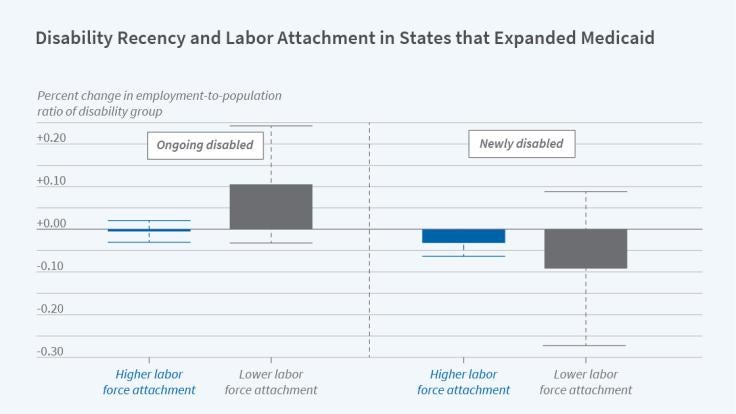
January 18, 2023 - Article
Following the 2010 Affordable Care Act, 39 states and the District of Columbia have expanded Medicaid to cover virtually all adults with incomes up to 138 percent of the federal poverty level Existing studies have reached differing conclusions as to the effect of Medicaid expansion on employment...
While the COVID-19 public health emergency has had disastrous health impacts for people with disabilities, it remains unclear what impact the associated economic recession and subsequent recovery have had on disability employment. Objective: We evaluated employment trends for people with and without...
Objectives To test for heterogeneous treatment effects in the impact of the Affordable Care Acts (ACA) Medicaid expansion on the employment of people with disabilities. Methods Using difference-in-difference approaches, we estimate the impact of the ACAs Medicaid expansion on employment outcomes...
Good health is important for employment at older ages. However, little is known about how health-related functional abilities interact with occupational demands to shape work capacity. Using new data, we quantify individuals functional abilities, combine that information with occupation-specific...
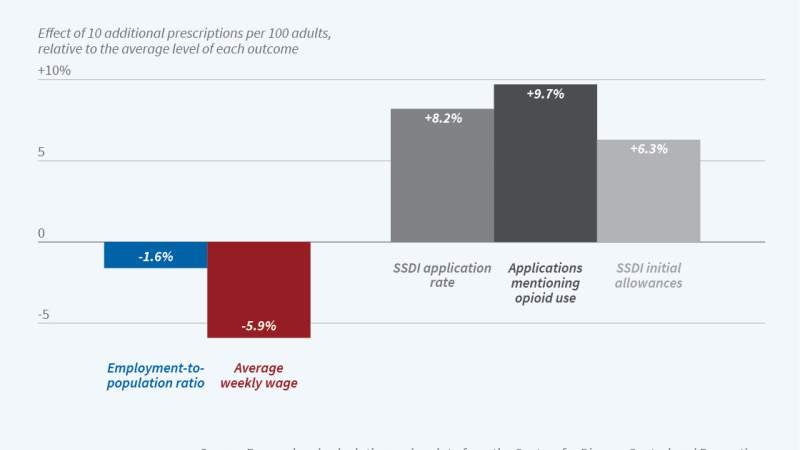
April 4, 2022 - Article
Chronic pain is a leading cause of work disability and a primary reason for receipt of SSDI benefits. Prescription opioids are frequently prescribed for chronic pain, but their use has been scrutinized in recent years due to concerns about addiction and overdose. Understanding how common...
Legal representatives play a prominent role in the Social Security Disability Insurance adjudication process, earning fees totaling $1.2 billion in 2019. Long ubiquitous in appellate hearings, disability representativesincluding attorneys and non-attorneyshave begun appearing more frequently at the...
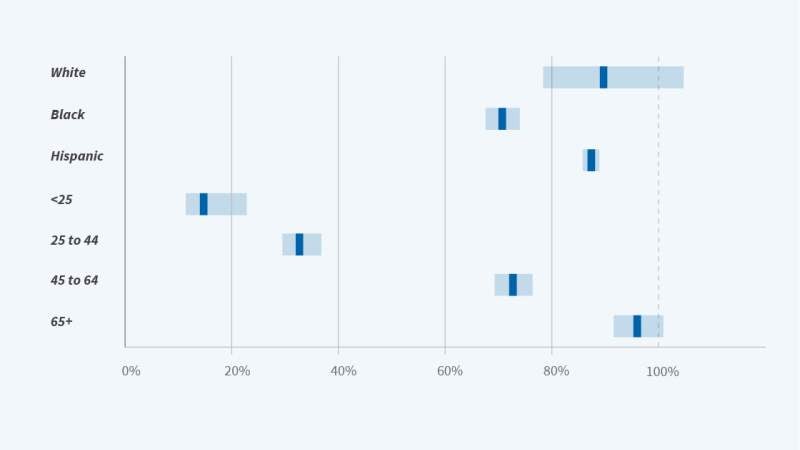
March 8, 2022 - Article
An estimated 646,514 excess deaths occurred in the United States during the first 12 months of the COVID-19 pandemic. This was a 22 percent increase over the number of deaths that would have been expected if the pandemic had not occurred. Among these excess fatalities, an estimated 83 percent were...
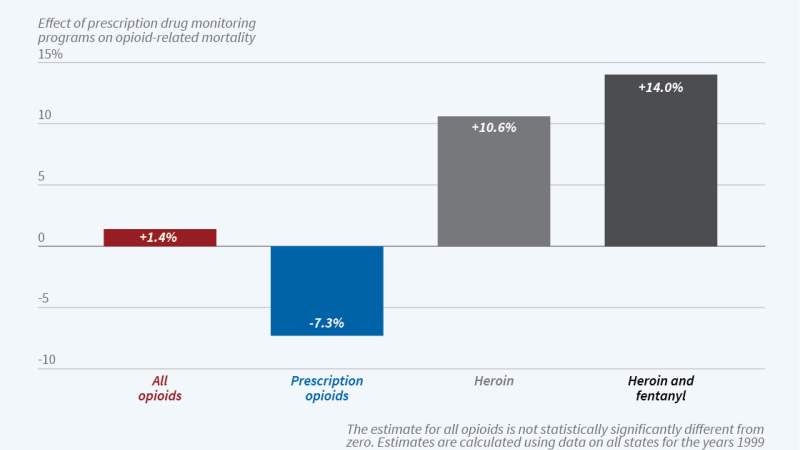
March 8, 2022 - Article
Almost all US states have implemented an electronic prescription drug monitoring program (PDMP) over the past 25 years in an effort to mitigate the risks of prescription drug abuse. Providers, pharmacists, and law enforcement can query these web-based databases, which track prescriptions of...
We investigate behavioral responses to a staggered disruption in the supply of prescription opioids across U.S. states: the introduction of electronic Prescription Drug Monitoring Programs (PDMPs). Using administrative datasets, we find PDMPs curtail the proliferation of prescription opioids....
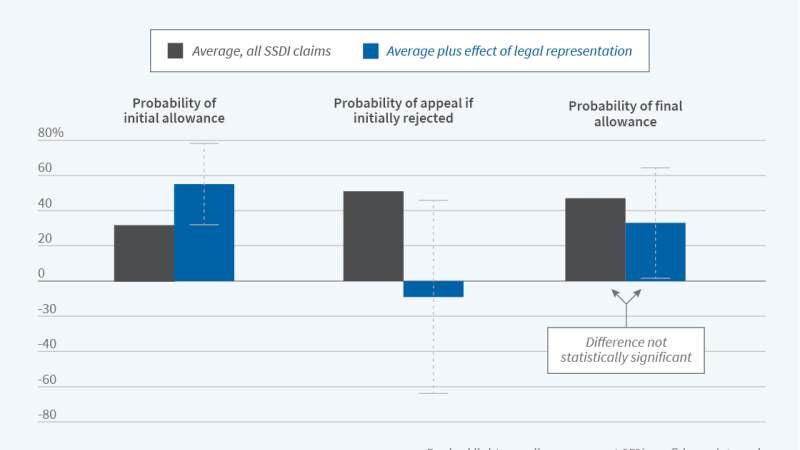
December 27, 2021 - Article
The process of applying for Social Security Disability Insurance (SSDI) benefits is complex. Applicants must complete a long application documenting their employment history, medical conditions, and medical treatments, obtain relevant medical records, understand the relevance of certain...
In recent years, there has been a policy debate about whether the disability determination process for Social Security Disability Insurance (DI) benefits in the U.S. should be revised to reflect changes in the functional requirements of work. In particular, some policy makers have expressed interest...
Legal representatives play a large and growing role in the Social Security Disability Insurance adjudication process, earning fees totaling $1.2 billion in 2019. Long ubiquitous in appellate hearings, disability representativesincluding attorneys and non-attorneyshave begun appearing more frequently...
Prescription opioids are commonly used to treat pain among Social Security Disability Insurance (SSDI) beneficiaries. Opioid use among beneficiaries is of great public health concern given that beneficiaries account for a disproportionate share of opioid-related hospitalizations and deaths. Little...

January 7, 2021 - Article
Author(s) - Nicole Maestas
The NBER Retirement and Disability Research Center (RDRC) conducts research on issues relevant to Social Security policy. It is part of a national consortium of competitively selected research centers supported by the Social Security Administration (SSA) under five-year cooperative agreements. In...
Medical conditions that cause pain are a leading reason why workers leave the labor force and seek disability benefits. The fall in the labor supply of individuals with pain has occurred despite the increased availability of medications to treat pain notably opioids over the past two decades. The...
We use data on enrollment in the Supplemental Security Income (SSI) and Social Security Disability Insurance (SSDI) program and data on health care spending by Medicaid beneficiaries to analyze the extent to which Medicaid spending is predictive of future disability insurance receipt among non...
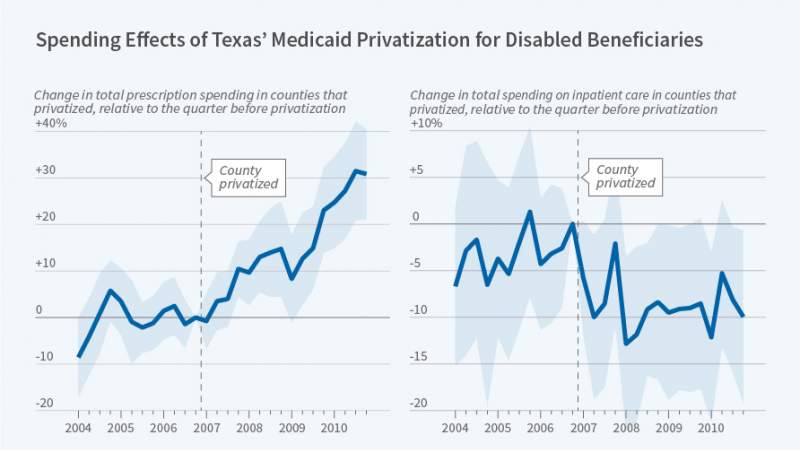
September 30, 2019 - Article
Public health insurance can be administered directly by the government or provided through private insurance firms. In the US, over 80% of Medicaid beneficiaries and one-third of Medicare beneficiaries receive their benefits through a private health plan. In theory, private provision may result in...
Public health insurance benefits in the U.S. are increasingly provided by private firms, despite mixed evidence on welfare effects. We investigate the impact of privatization in Medicaid by exploiting the staggered introduction of county-level mandates in Texas that required disabled beneficiaries...
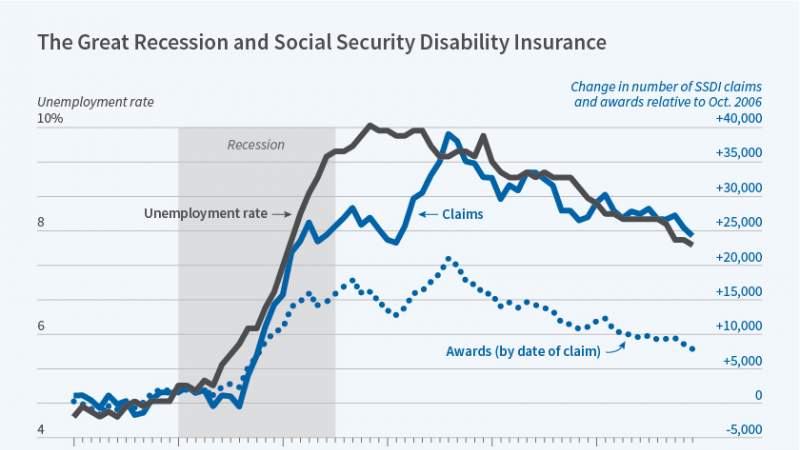
July 1, 2019 - Article
The U.S. Social Security Disability Insurance (DI) program is designed to insure workers against earnings losses arising from a severe and long-lasting disability. Previous research suggests that about 40 percent of DI applicants have at least some ability to work. For those in this group, the...
Public health insurance benefits in the U.S. are increasingly provided by private firms. We assess the consequences of private provision by exploiting the staggered introduction of enrollment mandates across counties in Texas and New York, which required disabled Medicaid beneficiaries to shift to...
We examine the effect of cyclical job displacement during the Great Recession on the Social Security Disability Insurance (SSDI) program. Exploiting variation in the severity and timing of the recession across states, we estimate the effect of unemployment on SSDI applications and awards. We find...
This paper documents variation in working conditions among workers in the United States, presents new estimates of how workers value these conditions, and assesses the impact of working conditions on estimates of the wage structure and inequality. We use evidence from a series of stated-preference...
Labor force exit due to disability is often preceded by a gradual decline in health. Frequent or increased rates of absence from work or presenteeism (working while sick) could serve as a signal that a worker has begun transitioning out of the labor force. We analyze the relationship between...
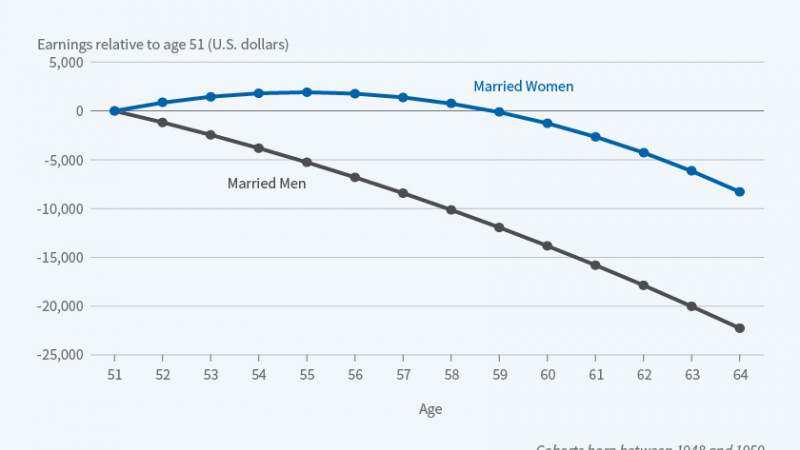
May 30, 2018 - Article
Author(s) - Nicole Maestas
Women tend to marry men who are older and to retire at the same time as their husbands. This pattern contributes to a substantial gender gap in Social Security wealth. Health status, expected Social Security benefits, and the leisure associated with reduced work are among the considerations that...
Author(s) - Nicole Maestas
It is well documented that individuals in couples tend to retire around the same time. But because women tend to marry older men, this means many married women retire at younger ages than their husbands. This fact is somewhat at odds with lifecycle theory that suggests women might otherwise retire...
We examine the effect of cyclical job displacement during the Great Recession on the Social Security Disability Insurance (SSDI) program. Exploiting variation in the severity and timing of the recession across states, we estimate the causal effect of unemployment on SSDI applications and awards. We...
April 12, 2017 - Chapter
Author(s) - Nicole Maestas
It is well documented that individuals in couples tend to retire around the same time. But because women tend to marry older men, this means many married women retire at younger ages than their husbands. This fact is somewhat at odds with lifecycle theory that suggests women might otherwise retire...
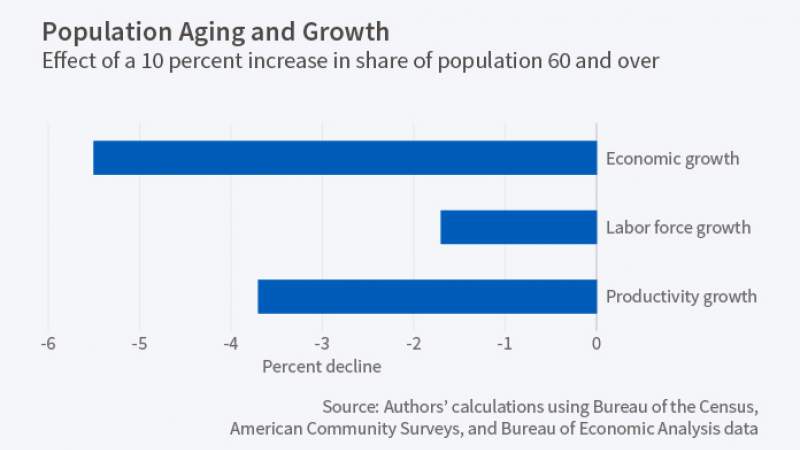
September 29, 2016 - Article
As the U.S. population becomes older than ever before, how will this affect our standard of living? The share of the U.S. population age 60 and above is expected to rise by 40 percent between 2010 and 2050. This historic shift may affect economic growth by altering the size and productivity of the...
Attorneys and non-attorney representatives play a large and increasing role in the SSDI application process, assisting applicants in developing their cases and representing them in disability hearings. Yet little is known about how representatives affect outcomes for claimants. In this paper, we...
Population aging is expected to slow U.S. economic growth. We use variation in the predetermined component of population aging across states to estimate the impact of population aging on growth in GDP per capita for 1980-2010. We find that each 10% increase in the fraction of the population ages 60+...
We use experimental survey methods in a nationally representative survey to test alternative ways of eliciting the size of the population for whom a workplace accommodation for ones health would increase their ability to work, and the rate at which these individuals receive workplace accommodation....
This paper measures the causal effect of time out of the labor force on subsequent employment of Social Security Disability Insurance (SSDI) applicants and distinguishes it from the discouragement effect of receiving disability benefits. Using a unique Social Security Administration workload...
This paper measures the causal effect of time out of the labor force on subsequent employment of Social Security Disability Insurance (SSDI) applicants and distinguishes it from the discouragement effect of receiving disability benefits. Using a unique Social Security Administration workload...
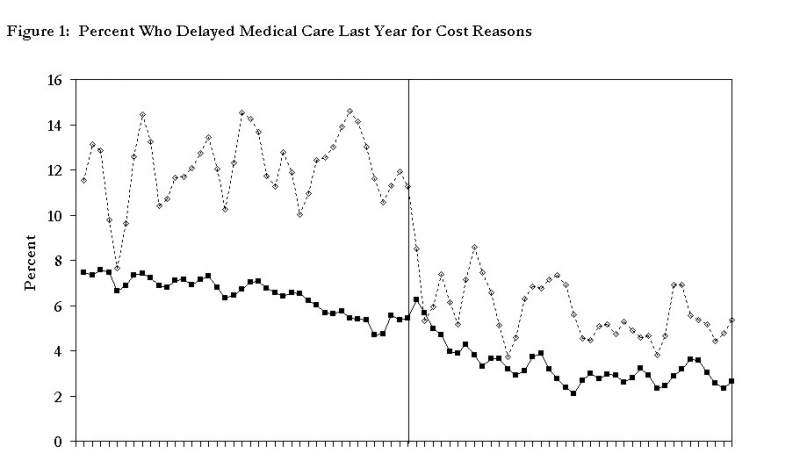
October 18, 2011 - Article
Over 43 million Americans, or some 17% of the non-elderly population, lacked health insurance in 2002. Previous research has established that the uninsured have worse health outcomes, but the effect of insurance on health outcomes is more difficult to ascertain. For example, if insured and uninsured...
October 6, 2011 - Article
Medicare expenditures topped $400 billion in 2006, accounting for roughly one-fifth of total health care spending in the U.S. Despite average expenditures of nearly $9,500 per beneficiary, there is very little evidence that Medicare improves health. Mortality rates and self-reported measures of...
Nearly 30 percent of Americans age 65 and older supplement their Medicare health insurance through the Medigap private insurance market. We show that prices for Medigap policies vary widely, despite the fact that all plans are standardized, and even after controlling for firm heterogeneity. Economic...
The health insurance characteristics of the population changes sharply at age 65 as most people become eligible for Medicare. But do these changes matter for health? We address this question using data on over 400,000 hospital admissions for people who are admitted through the emergency room for...
As health care costs continue to rise, medical expenses have become an increasingly important contributor to financial risk. Economic theory suggests that when background risk rises, individuals will reduce their exposure to other risks. This paper presents a test of this theory by examining the...
Show: results